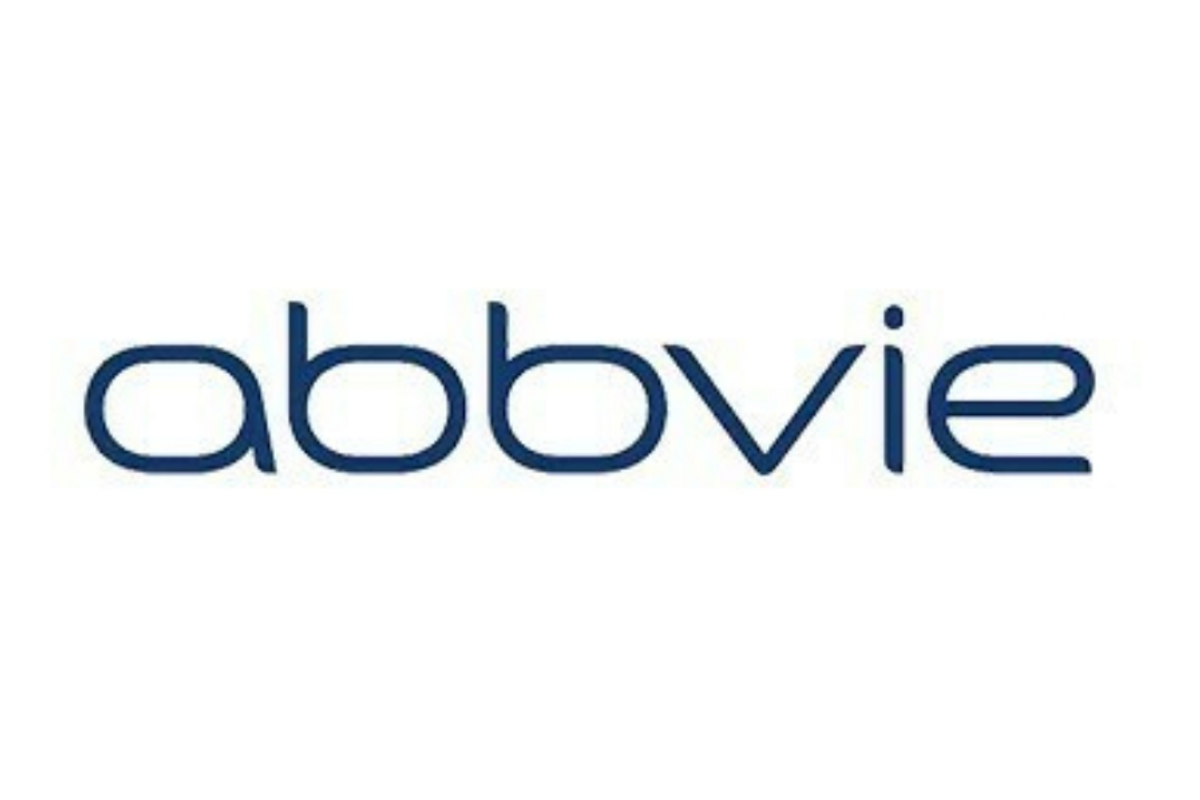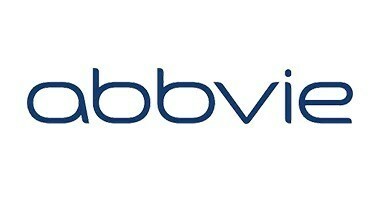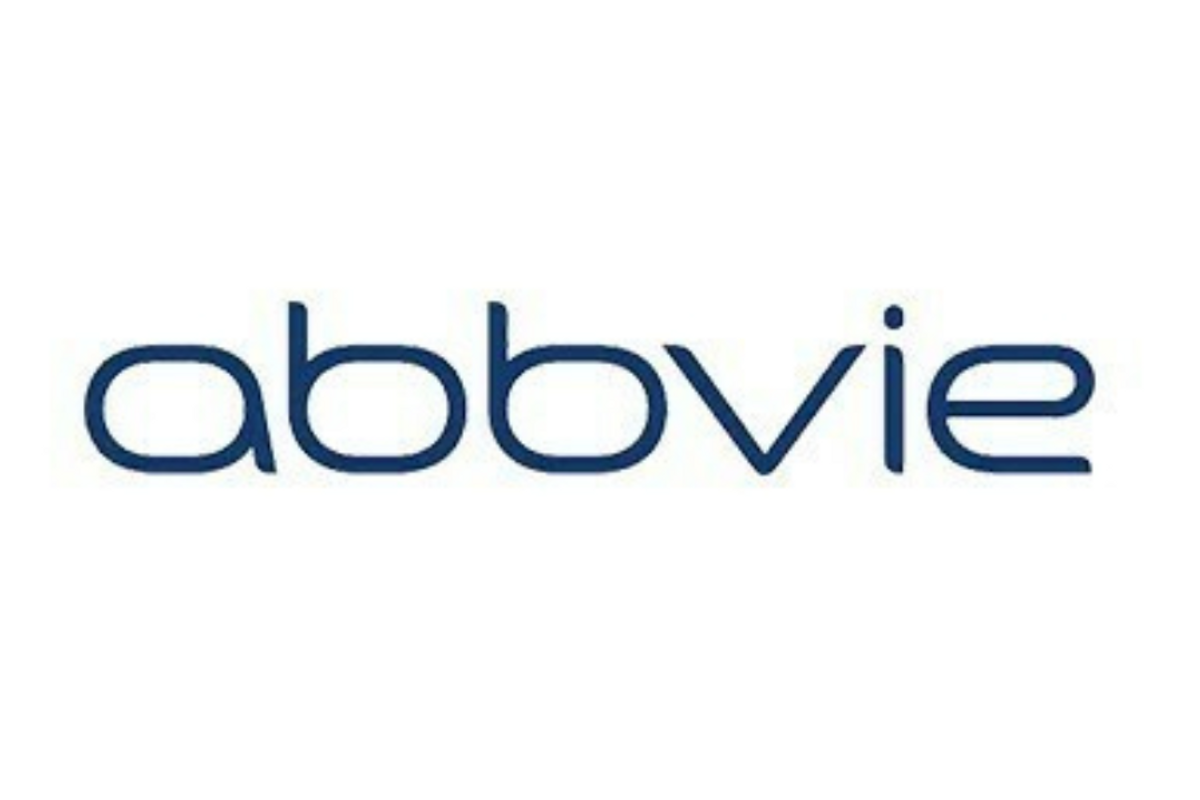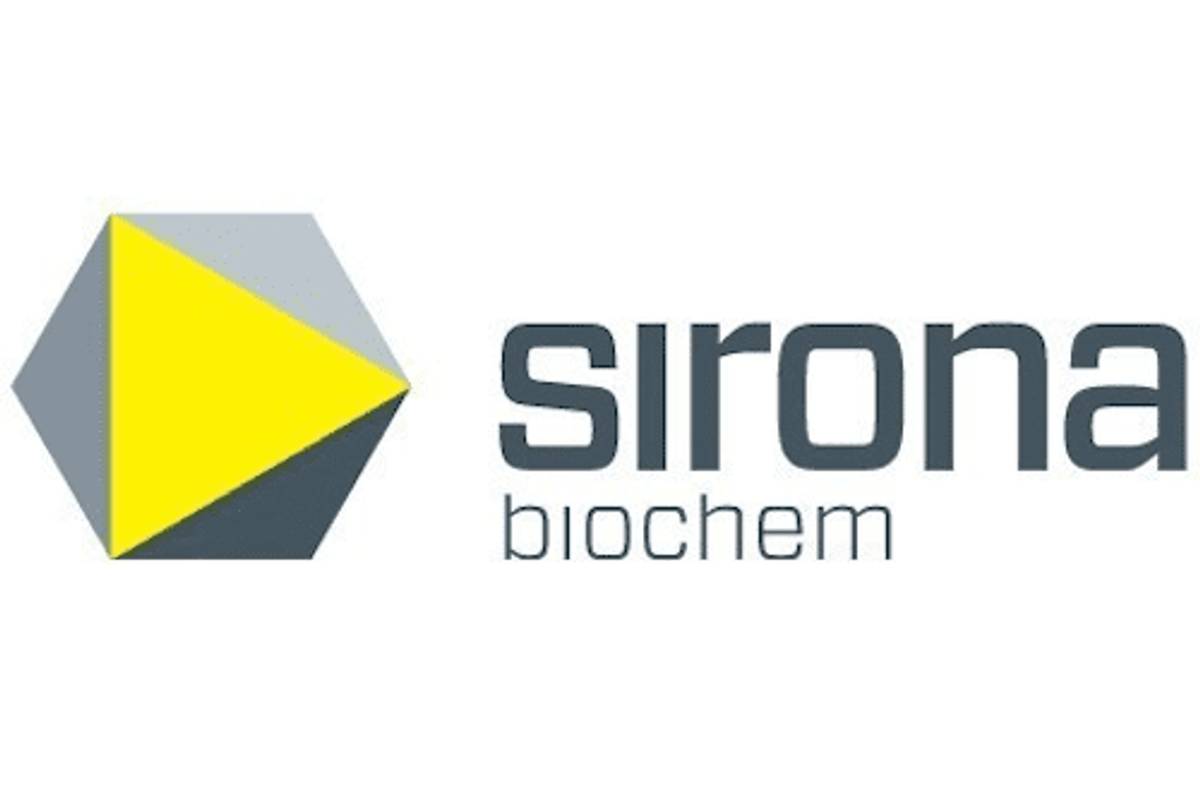- Submission is based on pivotal Phase 3 PROGRESS chronic migraine study evaluating atogepant (QULIPTA TM ) in adult patients that met primary endpoint of statistically significant reduction from baseline in mean monthly migraine days compared to placebo
- If approved, atogepant (QULIPTA) would be the first gepant (oral calcitonin gene-related peptide [CGRP] receptor antagonist) with a broad preventive treatment of migraine indication that expands treatment to patients with chronic migraine
- Label expansion would make AbbVie the only company to offer two preventive treatments for those with chronic migraine, atogepant (QULIPTA) and onabotulinumtoxinA (BOTOX ® )
ABBVie (NYSE: ABBV) today announced that it has submitted a supplemental New Drug Application (sNDA) for atogepant (QULIPTA TM ) to the U.S. Food and Drug Administration (FDA) to support the preventive treatment of chronic migraine in adults. If approved, atogepant (QULIPTA) would be the first gepant (oral calcitonin gene-related peptide [CGRP] receptor antagonist) approved for the broad indication of the preventive treatment of migraine, including episodic and chronic. The sNDA submission includes data from the pivotal Phase 3 PROGRESS trial in patients with chronic migraine, which supplements the existing data in episodic migraine. People living with chronic migraine experience headaches for 15 or more days per month, which, on at least eight of those days per month, have the features of migraine. 1
"Having one oral medication to treat both episodic and chronic migraine would be an important advancement for health care providers and patients," said Michael Gold , M.D., therapeutic area head, neuroscience development, AbbVie. "This sNDA approval would also diversify AbbVie's migraine portfolio and make it the only company to offer two approved preventive treatments for those living with chronic migraine. No two migraine patients are alike, so having multiple treatment options with unique mechanisms of action is critical."
The pivotal Phase 3 PROGRESS trial met its primary endpoint of statistically significant reduction from baseline in mean monthly migraine days compared to placebo across the 12-week treatment period in adults with chronic migraine. The trial also demonstrated that treatment with atogepant 60 mg once daily (QD) and 30 mg daily (BID) resulted in statistically significant improvements in all six secondary endpoints. This includes a key secondary endpoint that measured the proportion of patients that achieved at least a 50 percent reduction in mean monthly migraine days across the 12-week treatment period.
The overall safety profile of the Phase 3 PROGRESS study was consistent with safety findings observed in previous studies in an episodic migraine population. The most common adverse events were constipation and nausea.
Atogepant is marketed as QULIPTA TM in the United States and is FDA-approved to treat adults with episodic migraine. Use of atogepant for the preventive treatment of chronic migraine in the United States is not approved, and its safety and efficacy have not been evaluated by regulatory authorities.
About the Phase 3 PROGRESS Clinical Trial
The Phase 3 PROGRESS clinical trial evaluated the safety, tolerability and efficacy of oral atogepant for the preventive treatment of chronic migraine. 2 The patient population for the study included patients with a diagnosis of chronic migraine for at least one year, and greater than or equal to 15 headache days with greater than or equal to eight migraine days in the 28 days prior to randomization. 2 The primary endpoint measured the reduction from baseline in mean monthly migraine days compared to placebo, for both doses, including 60 mg once daily (QD) and 30 mg twice daily (BID), across a 12-week treatment period. 2
Key secondary endpoints for all regions included: Change from baseline in mean monthly headache days across the 12-week of treatment period (baseline is defined as the number of migraine days during the last 28 days prior to the randomization date); Change from baseline in mean monthly acute medication use days across the 12-week treatment period (baseline is defined as the number of migraine days during the last 28 days prior to the randomization date); Proportion of participants with at least a 50% reduction in mean monthly migraine days across the 12-week treatment period; and change from baseline in MSQ v2.1 Role Function-Restrictive domain score at Week 12. The MSQ v2.1 is a questionnaire designed to measure health-related quality of life impairments attributed to migraine in the past four weeks. It is divided into three domains, assessing how a patient's daily, social, and work activities are limited by migraine; how migraine prevents these activities; and assesses the emotional function related with migraine.
For a full listing of secondary endpoints across all regions, please go to www.clinicaltrials.gov (NCT03855137).
About QULIPTA™ (atogepant)
QULIPTA™ was approved by the U.S. Food and Drug Administration (FDA) for the preventive treatment of episodic migraine in adults in September 2021 . It is available in the United States as the first and only gepant (oral calcitonin gene-related peptide [CGRP] receptor antagonist) developed specifically for the preventive treatment of migraine and is now under review by the FDA to expand the episodic indication to also treat patients with chronic migraine. CGRP and its receptors are expressed in regions of the nervous system associated with migraine pathophysiology, and studies have shown that CGRP levels are elevated during migraine attacks. QULIPTA blocks CGRP through a once-daily dose and is available in three strengths – 10 mg, 30 mg and 60 mg.
QULIPTA™ USE AND U.S. IMPORTANT SAFETY INFORMATION
QULIPTA is a prescription medicine used for the preventive treatment of episodic migraine in adults.
Before taking QULIPTA, tell your healthcare provider about all your medical conditions, including if you:
- Have kidney problems or are on dialysis
- Have liver problems
- Are pregnant or plan to become pregnant. It is not known if QULIPTA will harm your unborn baby
- Are breastfeeding or plan to breastfeed. It is not known if QULIPTA passes into your breast milk. Talk to your healthcare provider about the best way to feed your baby while taking QULIPTA
Tell your healthcare provider about all the medicines you take , including prescription and over-the-counter medicines, vitamins, and herbal supplements. QULIPTA may affect the way other medicines work, and other medicines may affect how QULIPTA works. Your healthcare provider may need to change the dose of QULIPTA when taken with certain other medicines.
The most common side effects of QULIPTA are nausea, constipation, and fatigue. These are not all the possible side effects of QULIPTA.
Please see full Prescribing Information .
Globally, prescribing information varies; refer to the individual country product label for complete information.
About BOTOX ® (onabotulinumtoxinA)
BOTOX ® was first approved by the FDA in 1989 for two rare eye muscle disorders – blepharospasm and strabismus in adults. Today, BOTOX ® is FDA-approved for 12 therapeutic indications, including chronic migraine, overactive bladder, leakage of urine (incontinence) due to overactive bladder caused by a neurologic condition in adults and in pediatric patients five years of age and older, cervical dystonia, adult and pediatric spasticity, and severe underarm sweating (axillary hyperhidrosis).
BOTOX ® (onabotulinumtoxinA) U.S. Important Information
Indications
BOTOX ® is a prescription medicine that is injected into muscles and used:
- To treat overactive bladder symptoms such as a strong need to urinate with leaking or wetting accidents (urge urinary incontinence), a strong need to urinate right away (urgency), and urinating often (frequency) in adults 18 years and older when another type of medicine (anticholinergic) does not work well enough or cannot be taken
- To treat leakage of urine (incontinence) in adults 18 years and older with overactive bladder caused by a neurologic disease who still have leakage or cannot tolerate the side effects after trying an anticholinergic medication
- To treat overactive bladder due to a neurologic disease in children 5 years of age and older when another type of medicine (anticholinergic) does not work well enough or cannot be taken
- To prevent headaches in adults with chronic migraine who have 15 or more days each month with headache lasting 4 or more hours each day in people 18 years or older
- To treat increased muscle stiffness in people 2 years of age and older with spasticity
- To treat the abnormal head position and neck pain that happens with cervical dystonia (CD) in people 16 years and older
- To treat certain types of eye muscle problems (strabismus) or abnormal spasm of the eyelids (blepharospasm) in people 12 years of age and older
BOTOX ® is also injected into the skin to treat the symptoms of severe underarm sweating (severe primary axillary hyperhidrosis) when medicines used on the skin (topical) do not work well enough in people 18 years and older.
It is not known whether BOTOX ® is safe and effective to prevent headaches in patients with migraine who have 14 or fewer headache days each month (episodic migraine).
BOTOX ® has not been shown to help people perform task-specific functions with their upper limbs or increase movement in joints that are permanently fixed in position by stiff muscles.
It is not known whether BOTOX ® is safe and effective for severe sweating anywhere other than your armpits.
U.S. IMPORTANT SAFETY INFORMATION
BOTOX ® may cause serious side effects that can be life threatening. Get medical help right away if you have any of these problems any time (hours to weeks) after injection of BOTOX ® :
- Problems swallowing, speaking, or breathing, due to weakening of associated muscles, can be severe and result in loss of life. You are at the highest risk if these problems are pre-existing before injection. Swallowing problems may last for several months
- Spread of toxin effects. The effect of botulinum toxin may affect areas away from the injection site and cause serious symptoms including: loss of strength and all-over muscle weakness, double vision, blurred vision and drooping eyelids, hoarseness or change or loss of voice, trouble saying words clearly, loss of bladder control, trouble breathing, and trouble swallowing
There has not been a confirmed serious case of spread of toxin effect away from the injection site when BOTOX ® has been used at the recommended dose to treat chronic migraine, severe underarm sweating, blepharospasm, or strabismus.
BOTOX ® may cause loss of strength or general muscle weakness, vision problems, or dizziness within hours to weeks of taking BOTOX ® . If this happens, do not drive a car, operate machinery, or do other dangerous activities.
Do not receive BOTOX ® if you: are allergic to any of the ingredients in BOTOX ® (see Medication Guide for ingredients); had an allergic reaction to any other botulinum toxin product such as Myobloc ® (rimabotulinumtoxinB), Dysport ® (abobotulinumtoxinA), or Xeomin ® (incobotulinumtoxinA); have a skin infection at the planned injection site.
Do not receive BOTOX ® for the treatment of urinary incontinence if you: have a urinary tract infection (UTI) or cannot empty your bladder on your own and are not routinely catheterizing. Due to the risk of urinary retention (not being able to empty the bladder), only patients who are willing and able to initiate catheterization post treatment, if required, should be considered for treatment.
Patients treated for overactive bladder:
In clinical trials, 36 of the 552 patients had to self-catheterize for urinary retention following treatment with BOTOX ® compared to 2 of the 542 treated with placebo. The median duration of post-injection catheterization for these patients treated with BOTOX ® 100 Units (n = 36) was 63 days (minimum 1 day to maximum 214 days) as compared to a median duration of 11 days (minimum 3 days to maximum 18 days) for patients receiving placebo (n = 2). Patients with diabetes mellitus treated with BOTOX ® were more likely to develop urinary retention than nondiabetics.
Adult Patients treated for overactive bladder due to neurologic disease:
In clinical trials, 30.6% of patients (33/108) who were not using clean intermittent catheterization (CIC) prior to injection, required catheterization for urinary retention following treatment with BOTOX ® 200 Units as compared to 6.7% of patients (7/104) treated with placebo. The median duration of post-injection catheterization for these patients treated with BOTOX ® 200 Units (n = 33) was 289 days (minimum 1 day to maximum 530 days) as compared to a median duration of 358 days (minimum 2 days to maximum 379 days) for patients receiving placebo (n = 7). Among patients not using CIC at baseline, those with MS were more likely to require CIC post injection than those with SCI.
The dose of BOTOX ® is not the same as, or comparable to, another botulinum toxin product.
Serious and/or immediate allergic reactions have been reported , including itching, rash, red itchy welts, wheezing, asthma symptoms, dizziness, or feeling faint. Get medical help right away if you experience symptoms; further injection of BOTOX ® should be discontinued.
Tell your doctor about all your muscle or nerve conditions , such as ALS or Lou Gehrig's disease, myasthenia gravis, or Lambert-Eaton syndrome, as you may be at increased risk of serious side effects, including difficulty swallowing and difficulty breathing from typical doses of BOTOX ® .
Tell your doctor if you have any breathing-related problems. Your doctor may monitor you for breathing problems during treatment with BOTOX ® for spasticity or for detrusor overactivity associated with a neurologic condition. The risk of developing lung disease in patients with reduced lung function is increased in patients receiving BOTOX ® .
Cornea problems have been reported. Cornea (surface of the eye) problems have been reported in some people receiving BOTOX ® for their blepharospasm, especially in people with certain nerve disorders. BOTOX ® may cause the eyelids to blink less, which could lead to the surface of the eye being exposed to air more than is usual. Tell your doctor if you experience any problems with your eyes while receiving BOTOX ® . Your doctor may treat your eyes with drops, ointments, contact lenses, or with an eye patch.
Bleeding behind the eye has been reported. Bleeding behind the eyeball has been reported in some people receiving BOTOX ® for their strabismus. Tell your doctor if you notice any new visual problems while receiving BOTOX ® .
Bronchitis and upper respiratory tract infections (common colds) have been reported. Bronchitis was reported more frequently in adults receiving BOTOX ® for upper limb spasticity. Upper respiratory infections were also reported more frequently in adults with prior breathing-related problems with spasticity. In pediatric patients treated with BOTOX ® for upper limb spasticity, upper respiratory tract infections were reported more frequently. In pediatric patients treated with BOTOX ® for lower limb spasticity, upper respiratory tract infections were not reported more frequently than placebo.
Autonomic dysreflexia in patients treated for overactive bladder due to neurologic disease. Autonomic dysreflexia associated with intradetrusor injections of BOTOX ® could occur in patients treated for detrusor overactivity associated with a neurologic condition and may require prompt medical therapy. In clinical trials, the incidence of autonomic dysreflexia was greater in adult patients treated with BOTOX ® 200 Units compared with placebo (1.5% versus 0.4%, respectively).
Tell your doctor about all your medical conditions, including if you: have or have had bleeding problems; have plans to have surgery; had surgery on your face; weakness of forehead muscles; trouble raising your eyebrows; drooping eyelids; any other abnormal facial change; have symptoms of a urinary tract infection (UTI) and are being treated for urinary incontinence (symptoms of a urinary tract infection may include pain or burning with urination, frequent urination, or fever); have problems emptying your bladder on your own and are being treated for urinary incontinence; are pregnant or plan to become pregnant (it is not known if BOTOX ® can harm your unborn baby); are breastfeeding or plan to (it is not known if BOTOX ® passes into breast milk).
Tell your doctor about all the medicines you take, including prescription and over-the-counter medicines, vitamins, and herbal supplements. Using BOTOX ® with certain other medicines may cause serious side effects. Do not start any new medicines until you have told your doctor that you have received BOTOX ® in the past.
Tell your doctor if you received any other botulinum toxin product in the last 4 months; have received injections of botulinum toxin such as Myobloc ® , Dysport ® , or Xeomin ® in the past (tell your doctor exactly which product you received); have recently received an antibiotic by injection; take muscle relaxants; take an allergy or cold medicine; take a sleep medicine; take aspirin-like products or blood thinners.
Other side effects of BOTOX ® include: dry mouth, discomfort or pain at the injection site, tiredness, headache, neck pain, eye problems: double vision, blurred vision, decreased eyesight, drooping eyelids, swelling of your eyelids, dry eyes; drooping eyebrows; and upper respiratory tract infection. In adults being treated for urinary incontinence, other side effects include urinary tract infection and painful urination. In children being treated for urinary incontinence, other side effects include urinary tract infection and bacteria in the urine. If you have difficulty fully emptying your bladder on your own after receiving BOTOX ® , you may need to use disposable self-catheters to empty your bladder up to a few times each day until your bladder is able to start emptying again.
For more information refer to the Medication Guide or talk with your doctor.
You are encouraged to report negative side effects of prescription drugs to the FDA. Visit www.fda.gov/medwatch or call 1-800-FDA-1088.
Please see BOTOX ® full Product Information , including Boxed Warning and Medication Guide .
Globally, prescribing information varies; refer to the individual country product label for complete information.
If you are having difficulty paying for your medicine, AbbVie may be able to help.
Visit AbbVie.com/myAbbVieAssist to learn more.
About Migraine and Chronic Migraine
Migraine is a complex neurological disease with recurrent attacks that are often incapacitating and characterized by severe, throbbing headache pain as well as compounding associated symptoms like extreme sensitivity to light, sound or nausea. 1 It is highly prevalent, affecting more than 1 billion people worldwide, including 39 million people in the United States alone, and is the highest cause of disability worldwide for people under 50 years of age. 3-5
People living with chronic migraine experience headaches or migraine for 15 or more days per month, with at least eight of those days associated with migraine. 1 Chronic migraine impacts 1%-2% of the global population. 6 It is differentiated from episodic migraine by its more debilitating disease profile including greater prevalence of comorbid conditions as well as higher frequency of headache and migraine days. 7-9 Individuals with chronic migraine experience frequent disabling migraine attacks, preventing them from performing daily activities and significantly affecting their quality of life. This results in substantial societal and familial burden. 10-14 Significant direct and indirect costs are also associated with chronic migraine, leading to economic burden for patients and healthcare systems. 15-17
About AbbVie in Migraine
At AbbVie, we are committed to empowering people living with migraine disease. We advance science that enables health care providers to care for people impacted across the spectrum of migraine. Through education and partnerships with the migraine community, we strive to help those with migraine navigate barriers to care, access effective treatments and reduce the impact of migraine on their lives.
About AbbVie in Neuroscience
At AbbVie, our commitment to preserve the personhood of those living with neurological and psychiatric disorders is unwavering. Every challenge in this uncharted territory makes us more determined and drives us harder to discover and deliver solutions for patients, care partners and clinicians. AbbVie's Neuroscience portfolio consists of approved therapies in neurological and psychiatric disorders, including bipolar I disorder, cervical dystonia, major depressive disorder, migraine, Parkinson's disease, post-stroke spasticity, schizophrenia and others along with a robust pipeline.
We have a strong investment in neuroscience research, with our Foundational Neuroscience Center in Cambridge, Massachusetts , and our Neuroscience Discovery site in Ludwigshafen, Germany , where our research and resilience in these challenging therapeutic areas is yielding a deeper understanding of the pathophysiology of neurological and psychiatric disorders, and identifying targets for potential disease-modifying therapeutics aimed at making a difference in people's lives.
About AbbVie
AbbVie's mission is to discover and deliver innovative medicines that solve serious health issues today and address the medical challenges of tomorrow. We strive to have a remarkable impact on people's lives across several key therapeutic areas: immunology, oncology, neuroscience, eye care, virology, women's health and gastroenterology, in addition to products and services across our Allergan Aesthetics portfolio. For more information about AbbVie, please visit us at www.abbvie.com . Follow @abbvie on Twitter , Facebook , Instagram , YouTube and LinkedIn .
Forward-Looking Statements
Some statements in this news release are, or may be considered, forward-looking statements for purposes of the Private Securities Litigation Reform Act of 1995. The words "believe," "expect," "anticipate," "project" and similar expressions, among others, generally identify forward-looking statements. AbbVie cautions that these forward-looking statements are subject to risks and uncertainties that may cause actual results to differ materially from those indicated in the forward-looking statements. Such risks and uncertainties include, but are not limited to, failure to realize the expected benefits from AbbVie's acquisition of Allergan plc ("Allergan"), failure to promptly and effectively integrate Allergan's businesses, competition from other products, challenges to intellectual property, difficulties inherent in the research and development process, adverse litigation or government action, changes to laws and regulations applicable to our industry and the impact of public health outbreaks, epidemics or pandemics, such as COVID-19. Additional information about the economic, competitive, governmental, technological and other factors that may affect AbbVie's operations is set forth in Item 1A, "Risk Factors," of AbbVie's 2021 Annual Report on Form 10-K, which has been filed with the Securities and Exchange Commission, as updated by its subsequent Quarterly Reports on Form 10-Q. AbbVie undertakes no obligation to release publicly any revisions to forward-looking statements as a result of subsequent events or developments, except as required by law.
1 Headache Classification Committee of the International Headache Society (IHS) The International Classification of Headache Disorders, 3rd edition. Cephalalgia. 2018;38:1-211.
2 Efficacy, Safety, and Tolerability, of Atogepant for the Prevention of Chronic Migraine. ClinicalTrials.gov. Available at: https://www.clinicaltrials.gov/ct2/show/NCT03855137?term=NCT03855137&draw=2&rank=1 . Accessed on June 14, 2022 .
3 The Facts About Migraine. American Migraine Foundation. Available at: https://americanmigrainefoundation.org/resource-library/migraine-facts/ . Accessed on February 23, 2022 .
4 Navigating Life with Migraine. American Migraine Foundation. Available at: https://americanmigrainefoundation.org/living-with-migraine/migraine-essentials/ . Accessed on: February 23, 2022 .
5 Steiner, T. J., Stovner, L. J., Vos, T., Jensen, R., & Katsarava, Z. Migraine is first cause of disability in under 50s: Will health politicians now take notice? J Headache Pain. 2018;19:17.
6 Natoli JL, Manack A, Dean B, et al. Global prevalence of chronic migraine: a systematic review. Cephalalgia. 2010;30:599-609.
7 Katsarava Z, Buse DC, Manack AN, Lipton RB. Defining the differences between episodic migraine and chronic migraine. Curr Pain Headache Rep. 2012;16:86-92.
8 Buse DC, Manack A, Serrano DC, et al. Sociodemographic and comorbidity profiles of chronic migraine and episodic migraine sufferers. J Neurol Neurosurg Psychiatry. 2010;81:428-432.
9 Adams AM, Serrano D, Buse DC, et al. The impact of chronic migraine: The Chronic Migraine Epidemiology and Outcomes (CaMEO) Study methods and baseline results. Cephalalgia. 2015;35(7) 563-578.
10 Blumenfeld A, Varon S, Wilcox TK, et al. Disability, HRQoL and resource use among chronic and episodic migraineurs: results from the International Burden of Migraine Study (IBMS). Cephalalgia. 2011;31:301-315.
11 Lantéri-Minet M, Duru G, Mudge M, Cottrell S. Quality of life impairment, disability and economic burden associated with chronic daily headache, focusing on chronic migraine with or without medication overuse: a systematic review. Cephalalgia. 2011;31:837-850.
12 Buse DC, Scher AI, Dodick DW, et al. Impact of migraine on the family: perspectives of people with migraine and their spouse/domestic partner in the CaMEO Study. Mayo Clin Proc . 2016;91:596-611.
13 Buse DC, Powers SW, Gelfand AA, et al. Adolescent perspectives on the burden of a parent's migraine: results from the CaMEO study. Headache. 2018;58:512-524.
14 Buse DC, Murray S, Dumas PK, et al. Life with migraine, effect on relationships, career and finances, and overall health and well-being results of the Chronic Migraine Epidemiology and Outcomes (CaMEO) Study. Cephalalgia. 2018;38(Suppl 1):9-10.
15 Messali A, Sanderson JC, Blumenfeld AM, et al. Direct and indirect costs of chronic and episodic migraine in the United States : a web-based survey. Headache. 2016;56:306-322.
16 Sanderson JC, Devine EB, Lipton RB, et al. Headache-related health resource utilization in chronic and episodic migraine across six countries. J Neurol Neurosurg Psychiatry. 2013;84:1309-1317.
17 Blumenfeld AM, Varon SF, Wilcox TK, et al. Disability, HRQoL and resource use among chronic and episodic migraineurs: Results from the International Burden of Migraine Study (IBMS). Cephalalgia. 2011;31:301-315.
![]() View original content: https://www.prnewswire.com/news-releases/abbvie-submits-supplemental-new-drug-application-to-us-fda-for-atogepant-qulipta-to-support-label-expansion-for-the-preventive-treatment-of-migraine-301570631.html
View original content: https://www.prnewswire.com/news-releases/abbvie-submits-supplemental-new-drug-application-to-us-fda-for-atogepant-qulipta-to-support-label-expansion-for-the-preventive-treatment-of-migraine-301570631.html
SOURCE AbbVie














